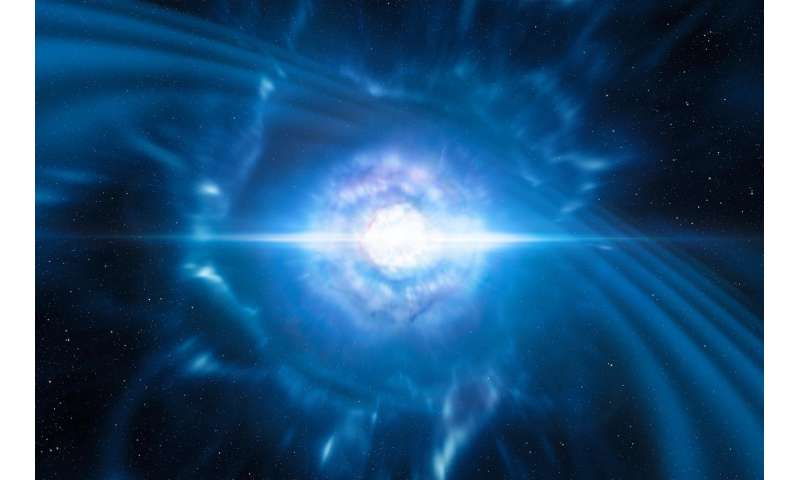Best of Last Week – Neutron star smashup, liquid metal discovery and alcohol improving foreign language skills

It was a big week for space news as dozens of teams reported on a neutron star smashup that was seen for the first time, transforming our understanding of the universe. Such impacts, many concluded, likely forged up to half of all the gold in the universe. Also, an international team of researchers proposed that filling the early universe with knots could explain why the world is three-dimensional—the knots would have been formed from flex tubes, which are theorized to link elementary particles. And a team led by a group of astronomers at the University of Arizona confirmed that Earth's new traveling buddy is definitely an asteroid, not space junk, as some had suggested. Also, NASA reported that a spacewalking astronaut successfully coped with a frayed tether and a bad jetpack. Joe Acaba spacewalked with Randy Bresknik on the International Space Station, overcoming the problems to perform some exterior maintenance. NASA also reported that a team working on the MAVEN mission found Mars has a twisted tail due to interaction with the solar wind.
In other news, a collaboration between teams with the University of Manchester, the University of British Columbia, the London School of Economics and Political Science and Stanford University led to headlines proclaiming that whales and dolphins have rich, 'human-like' cultures and societies. Their large brains allow them to communicate and behave similarly to humans, the team found. Also, the team behind AlphaGo Zero announced that their self-taught, 'superhuman' AI is now even smarter than it was when it beat the human world champion last year. And a pair of researchers with the University of Rennes announced that they may have found a cause of dyslexia. Guy Ropars and Albert le Floch with University of Rennes found evidence that it is due to a problem with light receptors in the eye, which they note, might be repairable. Also, a team at RMIT University in Melbourne announced a liquid metal discovery that will usher in a new wave of chemistry and electronics. They reported using it to create materials just a few atoms thick.
And finally, if you are someone who occasionally finds themselves attempting to speak to someone in another language but are not proficient at it, you might be interested in a study by a team with members from the University of Liverpool, Maastricht University and King's College London—they found that consuming a little bit of alcohol improves foreign language skills.
© 2017 Science X